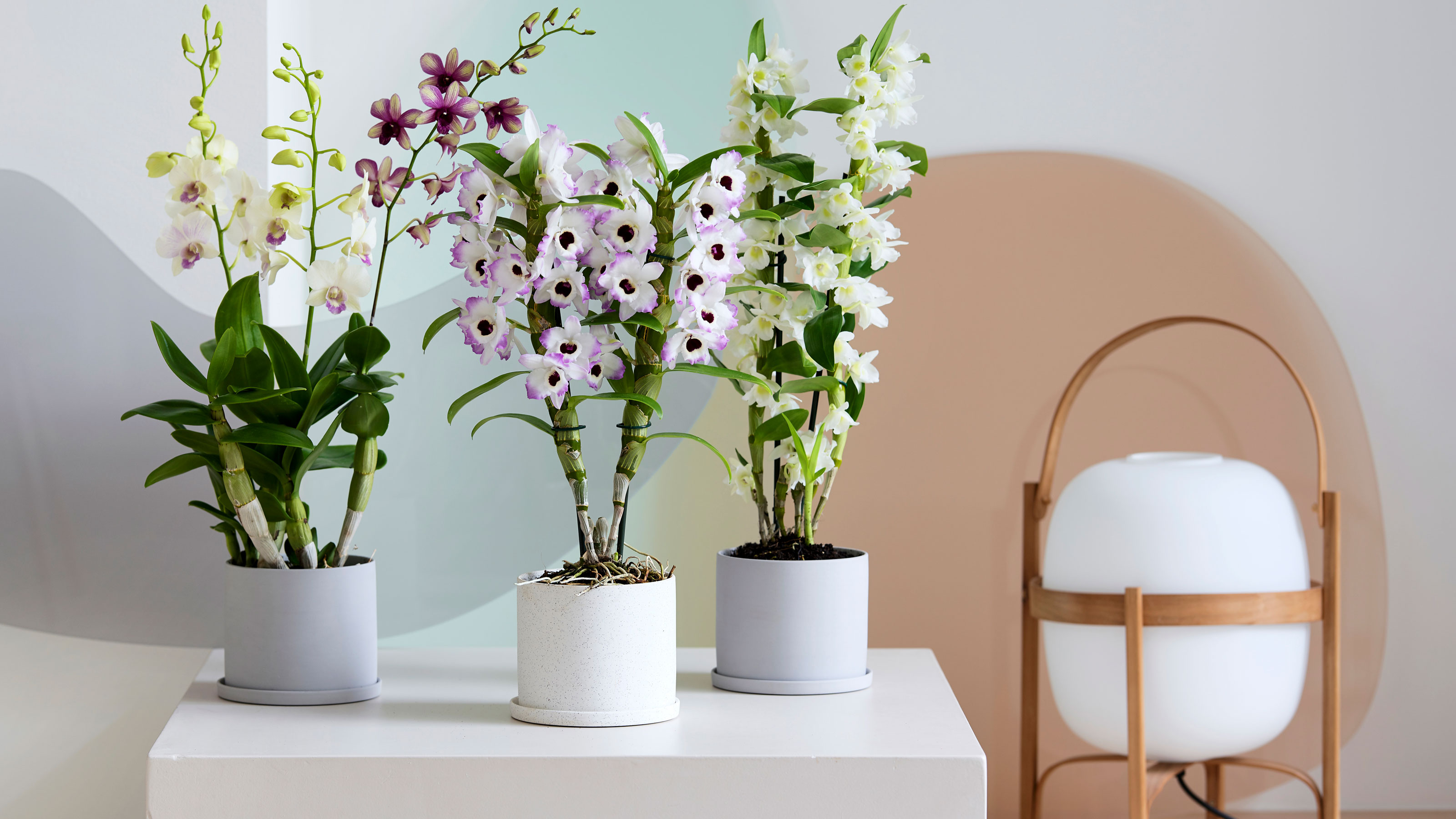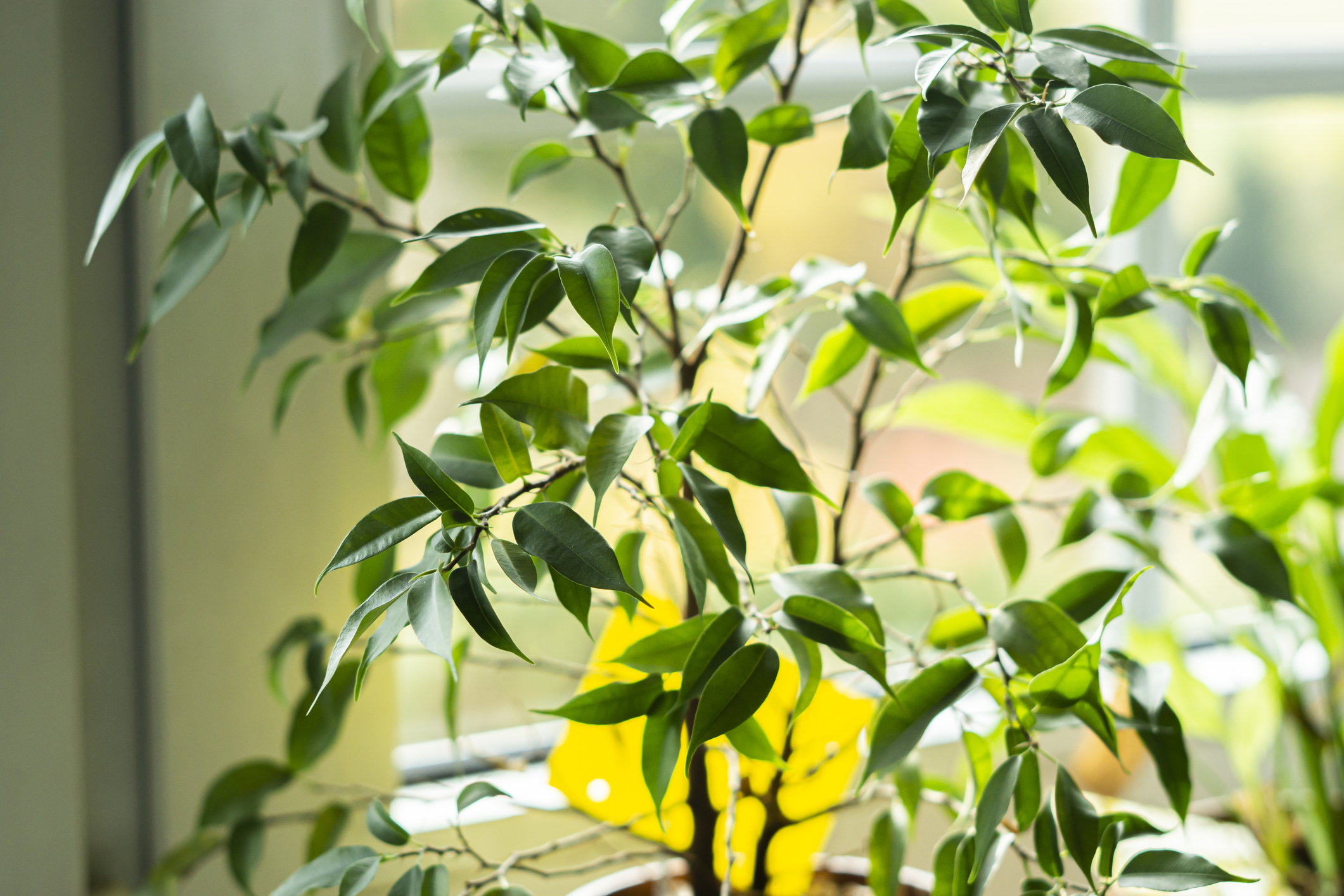How to get rid of fungus gnats on houseplants – experts explain the best ways to beat a gnat infestation
Learn how to get rid of fungus gnats and purge your home, and your houseplants, of these annoying pests


If you're looking at how to get rid of fungus gnats, you'll no doubt have noticed these tiny flying insects blighting your home. For the uninitiated, it can be hard to know where these gnats have come from, and why. However, there is a more than likely culprit for finding fungus gnats in your home – your houseplants.
Fungus gnats don't discriminate, so even if you opt for the best houseplants for beginners, you may still find yourself with a gnat infestation. However, there are simple ways to both treat your houseplants to put a halt to the sudden appearance of fungus gnats, and to avoid them infesting your home in the first place.
We asked the experts for the lowdown on why fungus gnats appear and how to get rid of them.
What causes a fungus gnat infestation?
Fungus gnats, as the name suggests, make their home in fungus, but where is this fungus that's causing gnats to invade your home?
'Fungus gnats enter residential properties when fungi sprout on access moisture in or around a residence,' explains Dr Nancy Troyano, a board-certified entomologist with Ehrlich Pest Control, 'while over-watered lawns and landscaping are commonly a cause of fungus gnat issues on the exteriors of homes.'
Unless your home is experiencing issues with damp, mold and fungus, the most likely source of fungus gnats is your houseplants. 'Gnats tend to appear on your houseplants when your plant's soil is too wet, explains Naomi Robinson of Houseplant Authority. 'When this happens, your plant will start to rot and grow fungus, and it's this fungus which gnats are drawn to.'
Fungus gnats lay their eggs in this soil, so you could soon find yourself with a serious infestation.
The Livingetc newsletters are your inside source for what’s shaping interiors now - and what’s next. Discover trend forecasts, smart style ideas, and curated shopping inspiration that brings design to life. Subscribe today and stay ahead of the curve.
Largely, fungus gnats are just annoying, but they do have a slightly more sinister side too. 'In addition to scaring away house guests and annoying homeowners, fungus gnats can also spread diseases like E. coli and salmonella,' explains Dr Nancy Troyano.
How to get rid of fungus gnats on houseplants
Swatting a few gnats away isn't enough to beat a full-blown infestation. 'It's important to keep in mind that getting rid of gnats involves not only removing the ones you can see flying around, which are the adults, but also any larvae that are likely in the soil,' explains Naomi Robinson of houseplant Authority.
Here's how to tackle both the gnats flying around your home and the source of your gnat troubles.
1. Change the soil to get rid of gnat larvae
Gnats lay their larvae in the wet soil, and especially love a houseplant which has mold. That means, your first step to getting rid of gnats is the same as getting rid of mold on houseplant soil. 'No matter the exact reason behind why your plants suddenly have gnats, the best way to get rid of them is to replace the soil and repot the affected plants,' says Naomi Robinson. 'Make sure you also clean your plant's pot thoroughly to make sure any larvae are well and truly gone.'
2. Treat the adult gnats, too
Adult gnats can be tackled with all kinds of fly removal sprays and devices, but fly traps that have pheromones that attract gnats work particularly well.
'My favorite way is to simply mix one part apple cider vinegar with two parts water, then add a couple of drops of dish soap,' suggests Naomi. 'Put this mixture in a small dish near the plant that the gnats seem to like and they'll soon find their way to the liquid.'

3. Allow houseplant soil to dry out
Once your soil is changed, it's worth letting it dry out before considering watering it again. 'Make sure the potting mix is dry to the touch before watering your plant,' says Brody Hall of The Indoor Nursery. 'Overwatering is one of the most common reasons for gnats in houseplants, so letting the soil dry out between waterings will help keep them away.'
4. Try adding carnivorous plants to your home
For a natural way to get rid of insect pests, look to supplementing your space with even more house plant. 'We also like using carnivorous plants along our existing plants to help with the adult fungus gnats and trap them,' suggests Ayelet Faerman, founder of plant delivery firm Verdant Lyfe. Plants such as Venus Flytraps and Pitcher Plants are a good place to start.
5. Add beneficial nematodes to houseplant soil
Beneficial nematodes, like these from Amazon, are a roundworm additive you can introduce into soil as a form of pest control. Nematodes parasite gnat larvae in the soil, while safe for the plants, and humans.
6. As a last resort, use an insecticide
'If these approaches aren’t successful, indoor gardeners can spray the infested plant with a commercially available product like Gnatrol,' says Brody Hall. 'Gnatrol, from Amazon, is a natural insecticide made from bacteria that is very effective at killing gnats.'
There are homemade solutions that will do the job too. 'To successfully get rid of gnats, use four parts waters with one part hydrogen peroxide and spray down your soil,' says Craig Wilson, founder of Gardener's Dream.
How do I stop fungus gnats reappearing?
'To avoid any gnats appearing in future, and assuming that they arrived due to root rot setting in, it's important to adjust your watering schedule so that your plants are only getting an appropriate amount of water,' says Naomi Robinson of Houseplant Authority.
'You can add rocks at the top of the soil which can help with making sure the fungus gnats won't come back as they can no longer lay eggs in the soil,' adds Ayelet Faerman. 'Having good drainage and loose soil will help reduce both the gnats and any mold growth because it won't have stagnant water for as long.'

Hugh is Livingetc.com’s editor. With 8 years in the interiors industry under his belt, he has the nose for what people want to know about re-decorating their homes. He prides himself as an expert trend forecaster, visiting design fairs, showrooms and keeping an eye out for emerging designers to hone his eye. He joined Livingetc back in 2022 as a content editor, as a long-time reader of the print magazine, before becoming its online editor. Hugh has previously spent time as an editor for a kitchen and bathroom magazine, and has written for “hands-on” home brands such as Homebuilding & Renovating and Grand Designs magazine, so his knowledge of what it takes to create a home goes beyond the surface, too. Though not a trained interior designer, Hugh has cut his design teeth by managing several major interior design projects to date, each for private clients. He's also a keen DIYer — he's done everything from laying his own patio and building an integrated cooker hood from scratch, to undertaking plenty of creative IKEA hacks to help achieve the luxurious look he loves in design, when his budget doesn't always stretch that far.